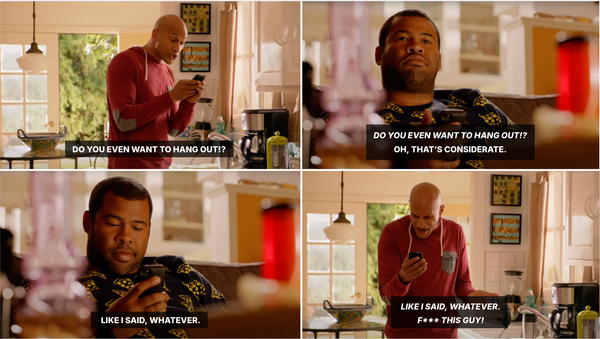Six ways to make real impact during Black History Month

While we celebrate Black History Month in February with programming to honor our Black colleagues and their forebears, there is still a ton of work to be done to address systemic biases in our organizations. A new LinkedIn profile image is great, and so are the lunch-and-learns. But let’s go further!
A caveat here that’s worth calling out: everything we list here will help Black and brown people, and white people, too. Everything we list here will help people of different physical abilities. Everything we list here will help neurodivergent and neurotypical people.
Here’s six ways to make diversity, equity, inclusion, and belonging real priorities during Black History Month and beyond.
1. Educate yourself
Conferences to connect 1:1
- Meet leaders at the Black Enterprise Women of Power Summit
- Hire future leaders that you meet at the National Black MBA Conference
- Experience culture at the Essence Festival
Books to push the envelope
- Against White Feminism, by Rafia Zakaria
- So You Want to Talk About Race, by Ijeoma Oluo
- On Intersectionality, by Kimberle Crenshaw
- Between the World and Me, by Ta-nehisi Coates
Podcasts to challenge and inspire
- Code Switch
- Yo, Is This Racist?
- The Stoop
- Still Processing (we think new episodes are coming soon)
2. Actually address pay and opportunity equity
Leadership teams, especially those in big corporations, are still mostly filled with white men. What are the chances that only white men are the best people for MOST leadership jobs? How could that be the case?
We need to urgently address pay equity – Black and brown men and women are still earning only a portion of what their white colleagues are earning for the same work – while we reconsider who gets a chance to succeed.
Leaders, take a first step and have a look at you and your colleagues. How did you all get to the seats you’re in today? How did personal relationships factor in, or referrals from trusted colleagues? How did you all get a chance at the projects that defined your career – and who gave you that chance?
Once you’ve given that some thought, the next action is to ensure that everyone in the organization gets the same chances, regardless of their race. Make sure there are ample networking opportunities for Black and brown folks to find their way into key, career-defining opportunities. Make sure they have support once they’re running those projects – if you’re a white leader, be a supportive ally.
From the comments, here's an excellent guide to navigating the pay gap from Lola Bakare:

3. Help your high achievers overcome imposter syndrome

Never heard of imposter syndrome? Good for you! Imposter syndrome is a nagging sense of self-doubt, or a feeling that despite your successes, people will someday find out that you don’t really know what you’re doing. It’s not specific to any race or gender, but finding and solving it will help more people achieve more, bigger goals.
MIT’s Sloan Review has five tips:
- Talk about it. For newly promoted groups, in a small group discussion setting, or even in a 1:1.
- Challenge and then reframe imposter thoughts. Help folks see their capability, and bring receipts.
- Help with career planning. Chart a path forward that includes skill development and chances to have critical experiences.
- Challenge stereotypes about what constitutes competence. Bring up some typical examples of “competence markers” and show some counter-examples (like quite, creative leaders or the folks that do the important glue work in a business).
- Check your bias when allocating rewards and assignments. Related to opportunity equity…who keeps getting the top assignments, and why?
We’d add one more: When you hire someone new into a role, have you checked to ensure this person has the right resources to be successful? Did you follow-up? What support did you personally provide (and how does it compare to the help you received)?
4. Improve psychological safety from the LT down

This is not about “being nice.” It’s about creating an environment where people feel safe to speak up and address issues in The Work. To quote friend and absolute icon Amy Edmondson,
Achieving performance in knowledge-intensive work relies on integrating the ideas and expertise of multiple people, which requires a willingness to speak candidly in a timely manner. In contrast, it’s harder to create change when the goal is stated as “helping people feel safe” or “becoming better listeners.” Those things matter, but they’re means, not ends.
Leaders are encouraged to model and practice vulnerability. If not, too much anxiety can result in an unsafe feeling where a lot is on the line and you cannot share different points of view. Start small, build trust and focus on performance outcomes.
Psychological safety encourages diverse groups to contribute to performance. End of story. Every leader needs to start getting good at this, yesterday.
5. It’s not a pipeline problem, but you can fix your pipeline
Diversity drives innovation. This study from HBR shows that more diverse organizations are 45% more likely to grow market share than their less diverse peers, mostly due to their internal capacity to support new ideas. But how do you diversify your workforce? It starts with hiring – especially if you’ve already addressed psychological safety, good career planning, created equitable opportunities, and upskilled leadership.
- Advertise your jobs in media consumed and created by marginalized communities. How about some of those podcasts listed above?
- We have nothing against advanced degrees, but… remove education requirements from your job specs. Some of your favorite CEOs aren’t college grads (including the late Steve Jobs). And in a lot of marketing jobs, the stuff that differentiates candidates doesn’t get taught in school.
- Blind your resume review process. Have your HR team bring relevant background details into a spreadsheet where you can’t see the person’s name, or go see their photo on LinkedIn.
- Stop winging your interviews. Standardize the questions you ask and the process you use. The research says it helps you pick the best candidate.
To measure your progress, check out this guide:

(No MIT SMR subscription? Here's the what to do: Start with sound goals; Measure at every level of the org; Account for office location when addressing representation; Track multiple, intersectional dimensions of diversity.)
6. Diversify your suppliers, too
When was the last time you searched for an external partner from a roster of diverse suppliers? Most people pick from the familiar and known, but take a moment to consciously create opportunities to expand the points of view and experiences that work on your business.
Need a list of Black-owned, POC-led agencies? We’ve got your back.








